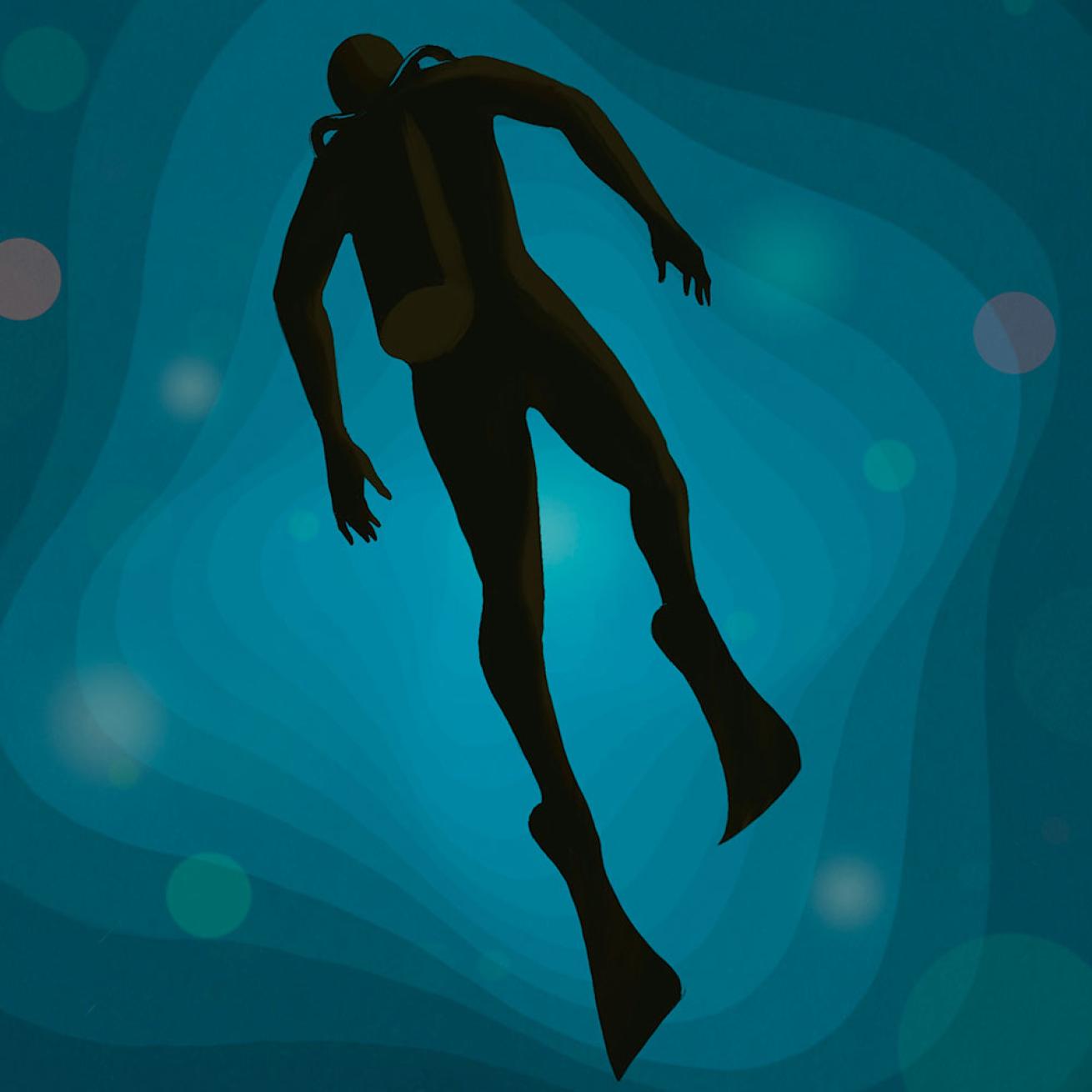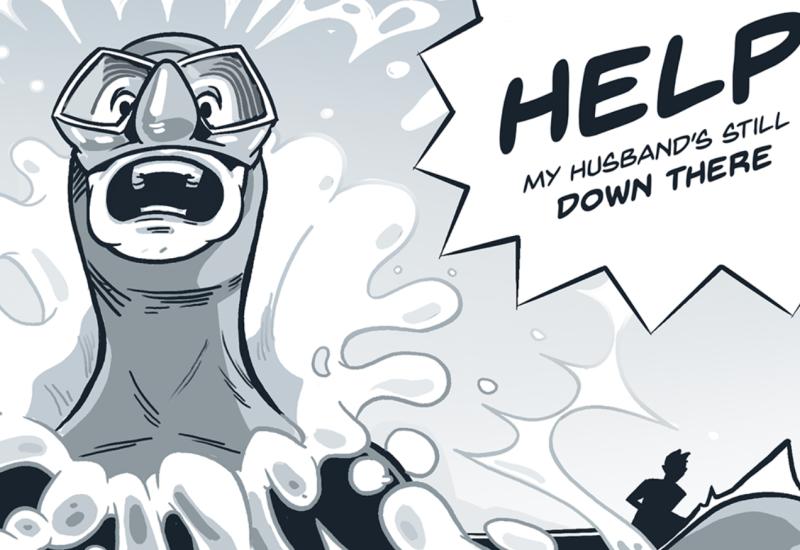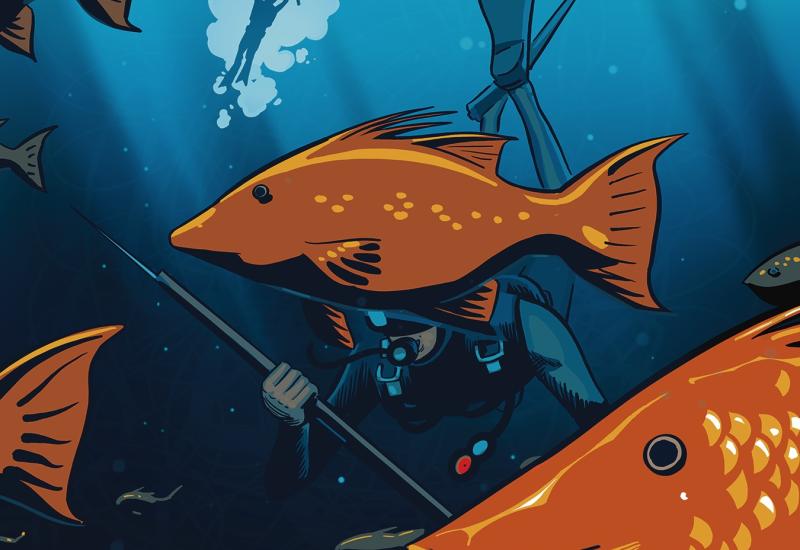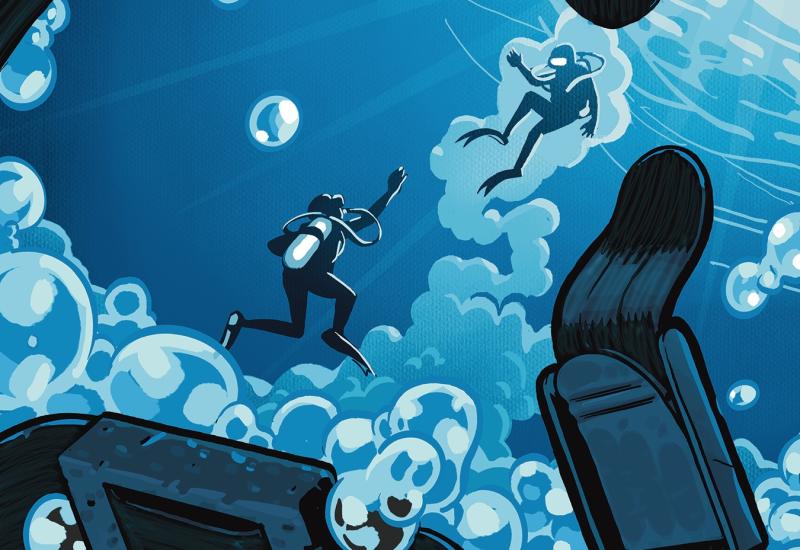Record Attempt Turns to Tragedy for Ill-Prepared Scuba Diver

Carlo GiambarresiLearn important scuba diving safety rules from a story about a diver dying while trying to set a personal record.
Everything was in place. Don felt good and was ready. Tonight was going to be the night he set a new personal depth record and broke 250 feet of seawater on a single tank. He couldn’t wait to get back to the dive shop and tell the gang.
The diver
Don was a 27-year-old male. He was an avid diver and had made more than 100 dives in the previous two years. He held an advanced open-water certification and was in good shape with no known health issues. He was a big man — his doctor had told him he should lose some weight, but it wasn’t causing any immediate health problems so it wasn’t a big concern for Don at the time.
The dive
The plan was simple. Don recruited three dive buddies to help him set a personal depth record. He wanted to brag that he had been below 250 feet on a single tank of air. Don’s buddies set themselves up at various depths along the way to serve as support divers in case something happened.
The only time they could all get together was after work, so they were going to make this dive at night. Don reasoned that diving at night would make it easier; they would be able to see one another’s dive lights if they got separated.
They were diving in a protected ocean cove and entered from shore. The underwater terrain dropped off quickly, going hundreds of feet deep before leveling off. Instead of descending directly down a line, Don planned to follow the bottom terrain to reach his goal.
Surf was mild for the entry, and the dive began without any problems. Visibility was limited at the dive site because of recent storms, but there was never any discussion of aborting the dive.
The accident
The team included four divers in two buddy groups.
One diver accompanied Don to 100 feet, and then stopped to wait for his return. He planned to give Don air from his alternate air source in case Don was running low. Don was not carrying an additional air source.
The two remaining divers from the other pair buddied up with Don to continue his descent. At the next stage, around 150 feet down, one of the divers became separated from Don and the last remaining diver. After searching for the others in the poor visibility, he decided to return to the surface.
“The effects of nitrogen narcosis take hold as shallow as 100 feet. Below 165 feet — six atmospheres of ambient pressure — those effects are significant.”
He said later that he felt the effects of nitrogen narcosis and didn’t feel comfortable continuing with the dive under those circumstances.
Finally, Don and the fourth diver reached 200 feet, but at that point, Don’s last buddy signaled that he had vertigo and could not continue. Don escorted the diver back to 160 feet, where the diver indicated his symptoms were decreasing.
At that point, Don decided to attempt the depth record on his own and continued his descent by himself.
Don’s partially skeletonized body was found nine months later by another diver, below 200 feet.
Analysis
One of the most common questions nondivers ask is, “How deep have you gone?” For some divers, being able to answer with an impressive number is a point of pride.
In many locations, there are amazing shipwrecks or exotic reefs below the recreational diving limit of 130 feet. Most of the time, though, there isn’t much to see below 130 feet that you can’t see much shallower. The recreational depth limit was put in place as a point where divers could reasonably see most of what the ocean has to offer and still be able to make it back to the surface without having to complete mandatory decompression or face issues such as nitrogen narcosis and oxygen toxicity.
Lessons for Life
■ Get the training to make the dive. Divers often make dives below recreational depth limits safely. To do so, they need special equipment, training and breathing-gas mixes.
■ Plan the dive. Once you have the training and equipment, plan the dive to make sure everyone comes back safely.
■ Don’t let goals get in the way of common sense. Don died for ego and bragging rights. Anyone with advanced training could have told him there were problems with this dive, but he wanted to brag.
Regardless of the reason for diving below recreational depth limits, it requires specialized training and equipment. No amount of practice or ambition negates simple physics.
With each atmosphere of pressure, you consume the air in your tank that much faster. This is a basic rule taught during open-water training. If it took you two hours to breathe down a standard scuba cylinder sitting on the surface, it would take you an hour to do so at 33 feet. That assumes you are sitting quietly on the bottom, not swimming and breathing harder than you did at the surface. At Don’s goal depths, a standard scuba tank will last only a fraction of the time it would on the surface. This is even more of a problem in Don’s case because they were diving diagonally instead of making a vertical descent to the bottom. Making this dive, in the way they attempted it — without additional scuba tanks or greater-than-normal air supplies — is nearly physically impossible without running out of air before they surfaced.
Another cause for concern with this dive — and a great example of the need for additional training — is the lack of planning for decompression after the dive. According to the U.S. Navy Dive Table 5 (1999), five minutes of bottom time at 200 feet requires 7:40 of mandatory decompression at 10 feet. Five minutes at 250 feet requires 11:20 of decompression. Don probably didn’t plan to spend more than a minute at his maximum depth but based on this profile, he likely would have needed several minutes of required decompression even using a dive computer that re-evaluated his depth and time every minute of the dive.
Don’s cause of death was ruled a drowning. One scenario is that nitrogen narcosis caused Don to become confused and he ran out of air at depth. The effects of nitrogen narcosis take hold as shallow as 100 feet. Below 165 feet — six atmospheres of ambient pressure — those effects are significant. Nitrogen narcosis can lead to feelings of euphoria, poor judgment and confusion.
Night diving can be beautiful and mesmerizing. You are likely to see animals and reef behavior on a night dive that you would never see during the day. Diving at night can also remove references to up and down and deprive you of sensory feedback. A night dive is no place to be narced. In this case, the low visibility reported by Don’s dive buddies likely served to make the situation worse.
A final cause for concern with diving air at depth is oxygen toxicity. At 218 feet, the oxygen in air becomes toxic. Oxygen toxicity can lead to seizures and unconsciousness. A seizure underwater is a recipe for drowning because an unconscious diver cannot retain a regulator in his mouth. In Don’s case, he was alone, so there was no one there to catch his regulator.
We will never know what happened in Don’s last few minutes, or whether he reached his goal. He may have had a seizure and lost consciousness. He may have been so disoriented by the effects of nitrogen narcosis that he simply ran out of air and didn’t realize it. Ultimately, he drowned alone because he wanted to make a dive to a depth he was not prepared for so he could brag about a number.
About Lessons for Life
We're often asked if the Lessons for Life columns are based on real-life events. The answer is yes, they are. The names and locations have been removed or altered to protect identities, but these stories are meant to teach you who to handle a scuba diving emergency by learning from the mistakes other divers have made. Author Eric Douglas takes creative license on occasion for the story, but the events and, often, the communication between divers before the accident are entirely based on incident reports.










